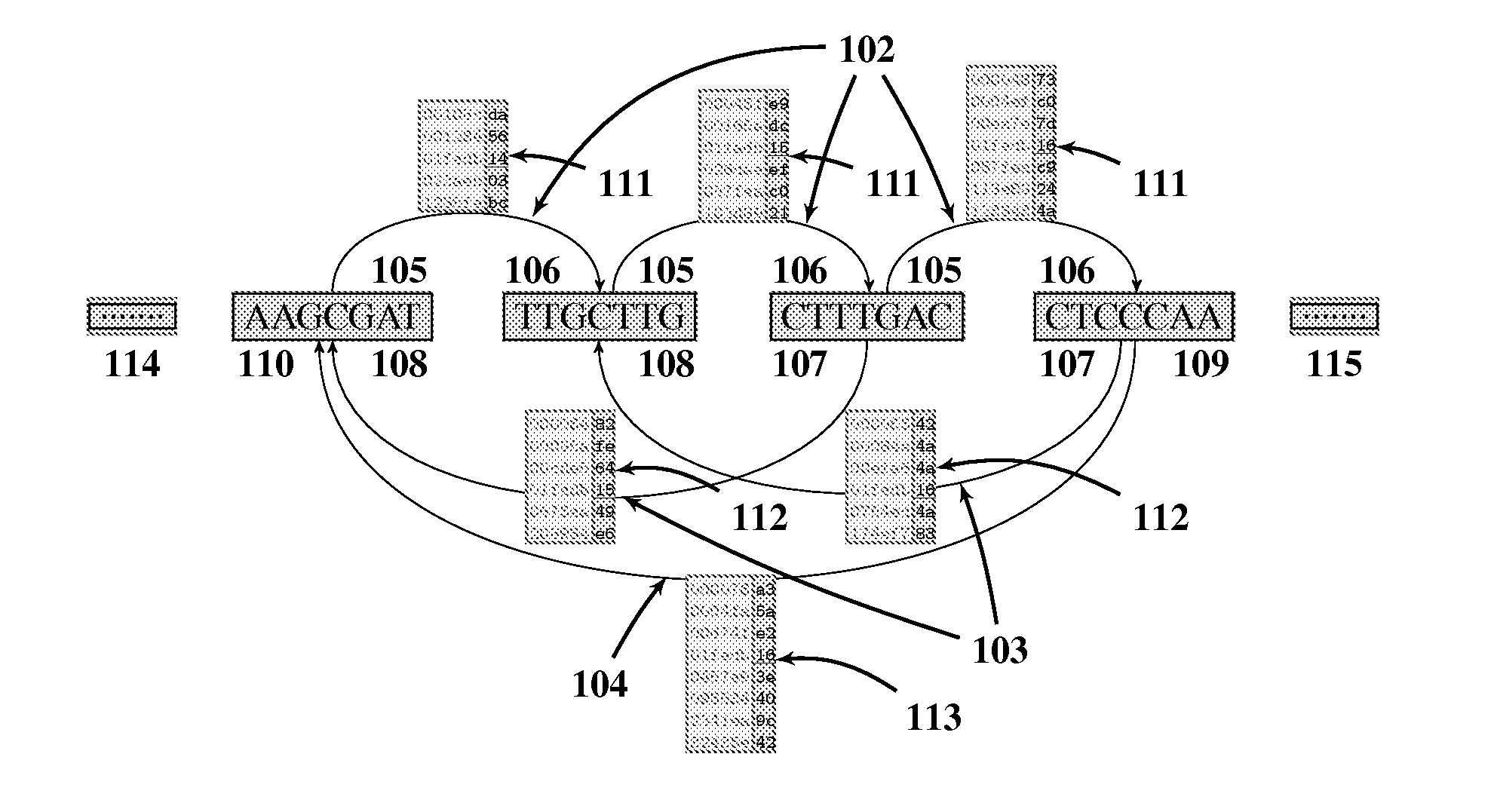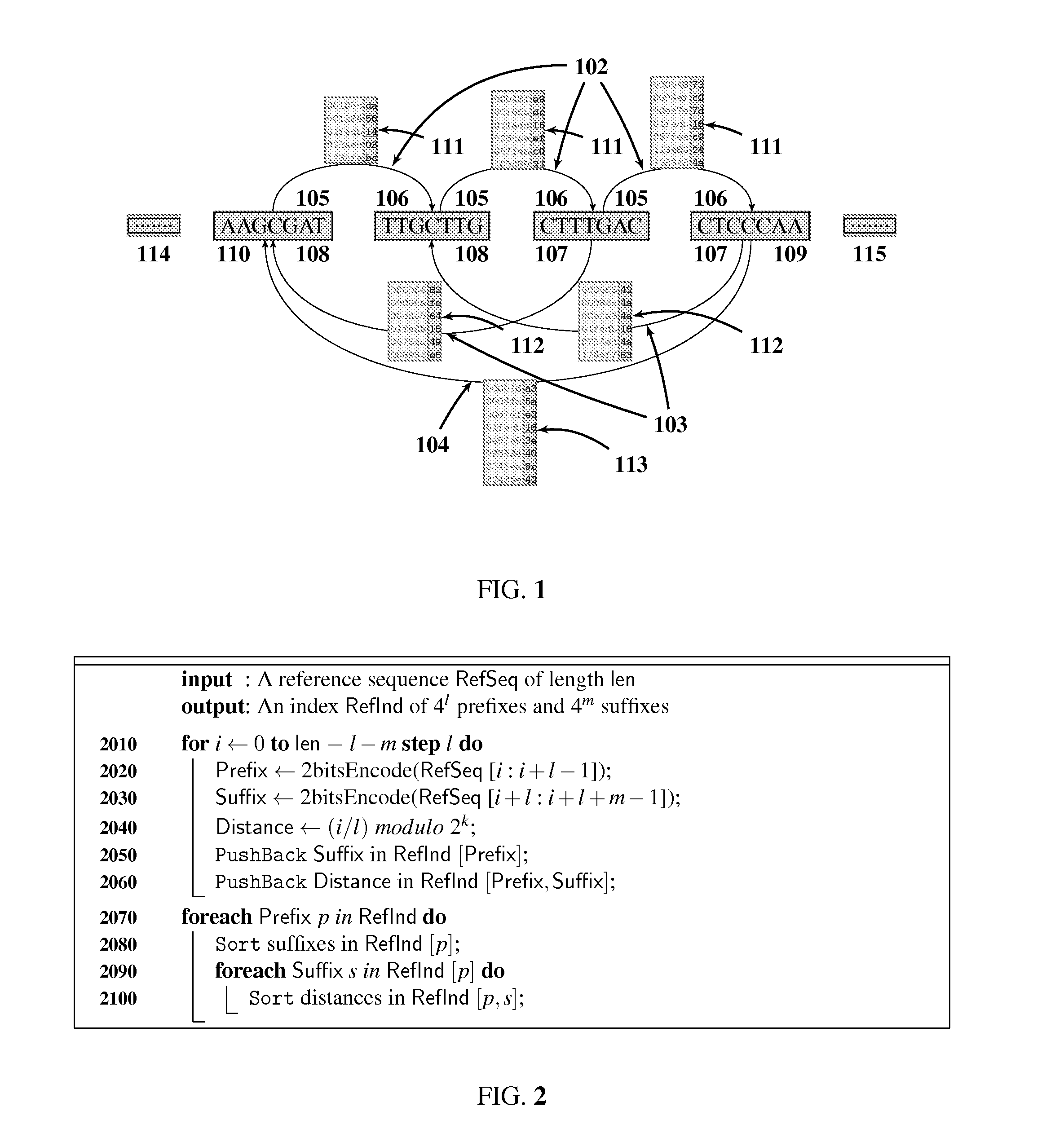Method for rapid assessment of similarity between sequences
a similarity and sequence technology, applied in the field of biological sequence comparison, can solve the problems of increasing the amount of genetic sequence information available, increasing the cost of computing power, and increasing the need for computers or other resources to search the entire database, so as to increase the query sensitivity and error tolerance
- Summary
- Abstract
- Description
- Claims
- Application Information
AI Technical Summary
Benefits of technology
Problems solved by technology
Method used
Image
Examples
Embodiment Construction
[0028]The preferred embodiment will be described with reference to the drawings. The method starts with building several forward 102 and backward indices (103, 104) for the reference sequence (SEQ ID NO: 1) as shown in FIG. 1. The indices are organized in list type structures to combine the advantages of both hash based and trie based methods. FIG. 1 shows the schematic diagram of an intermediate single step of index building, ignoring leading 114 and trailing 115 parts of the reference sequence. The forward index 102, shown above the sequence, is organized as a lexicographically sorted array of l base pairs prefixes 105. Each prefix entry 105 is pointing to a lexicographically sorted array of m base pairs suffixes 106, as shown by left to right directed arrows 102. In turn, each suffix entry 106 is associated with a numerically sorted array of l scaled k-bit masked locations 111 (i.e. locations / l modulo 2k) of each of these l+m base pairs indexed entries, as shown by tables touchin...
PUM
 Login to View More
Login to View More Abstract
Description
Claims
Application Information
 Login to View More
Login to View More - R&D
- Intellectual Property
- Life Sciences
- Materials
- Tech Scout
- Unparalleled Data Quality
- Higher Quality Content
- 60% Fewer Hallucinations
Browse by: Latest US Patents, China's latest patents, Technical Efficacy Thesaurus, Application Domain, Technology Topic, Popular Technical Reports.
© 2025 PatSnap. All rights reserved.Legal|Privacy policy|Modern Slavery Act Transparency Statement|Sitemap|About US| Contact US: help@patsnap.com



